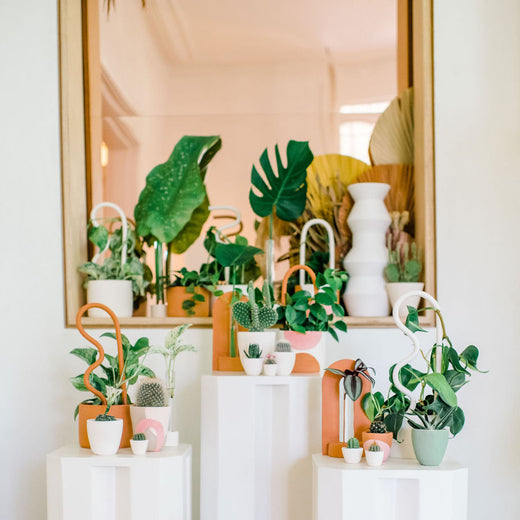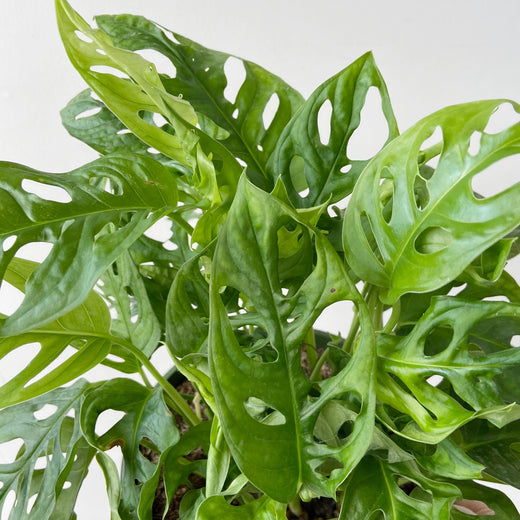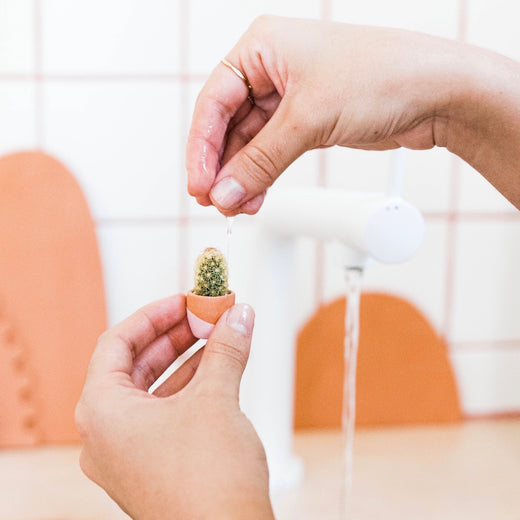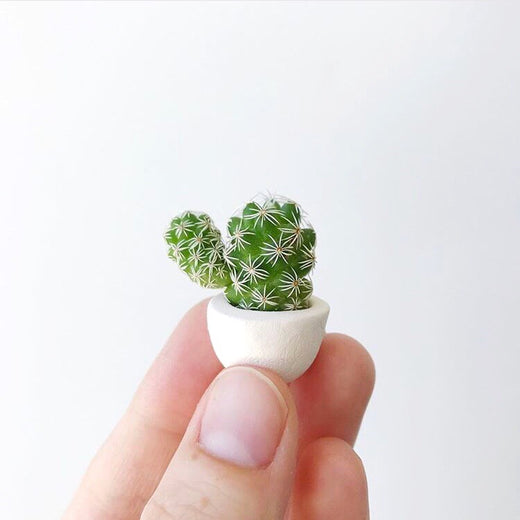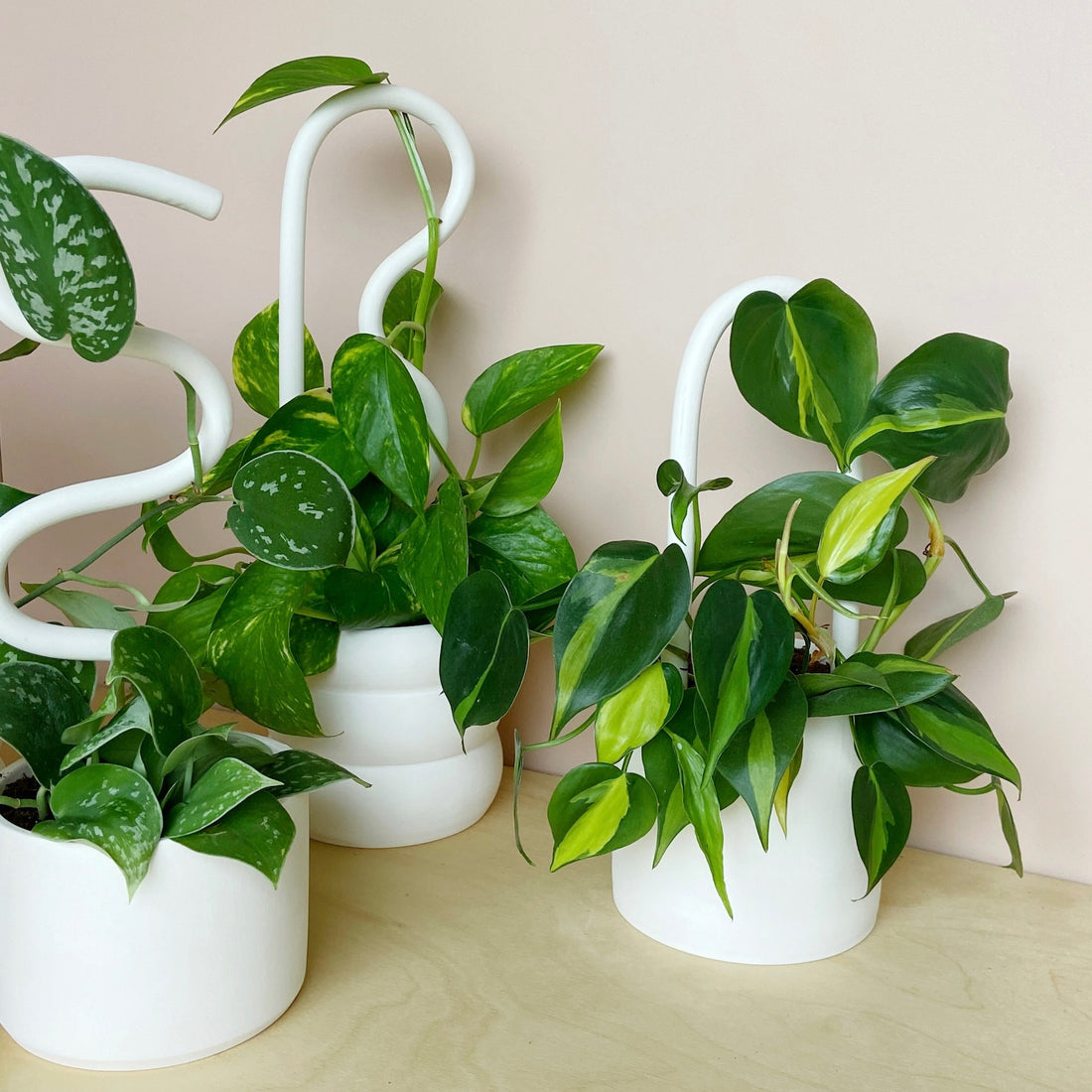Does your plant really need to be repotted? Or one of these two things instead?
I am sure you’ve noticed your houseplants growing and have wondered…
Is it time to re-pot that plant?
In this blog, we talk about what to do when your plant looks like it might be getting too big by showing you how to tell if it really needs to be repotted or what you can do instead!
Plants grow faster during warmer weather when they are getting more sun, warmth, and water.
But some plants, especially trailing plants like the Pothos, Philodendron, and Tradescantia we grow, can have rapid growth spurts when it is warm.
Before you repot your plant, try this:
1. See if your plant really needs to be repotted into a larger planter!
Repotting is not always needed when plants grow larger.
Repotting when a plant has a small root system can cause damage from overwatering, so make sure to check the root system before potting your plant into a larger planter.
Plants should be repotted (or up-potted) into a larger planter when the plant is root bound, meaning you can see bunches of large roots filling up the outside of the root ball - as if there is more root than soil in the pot.

It also is important to note that many houseplants, like all of the ones we grow, prefer to be in pots that are smaller rather than larger. You can read more about planter size here.
2. Should you propagate instead?
If your plant does not need a larger pot, you can always give it a little haircut!
Pruning is really good for plants and helps them to grow stronger and healthier.
We especially love trimming plants when the bottom of the plant is getting lanky or does not have as many leaves as the top.
In order to get your plant to sprout more leaves near the bottom, you can prune the plant at the top so that it can refocus its energy on making more leaves where it needs them.
And pruning is the most fun ever because, if you make sure to trim the plant below a node, you can propagate the clippings to make a new plant! Learn more about propagating plants here.
All you need to easily propagate plants is some water and a small clear glass container with the ability to hold the leaves above the water while holding at least one node on the stem underwater.
This is why we designed our propagation vessels, so that the cutting is perfectly held in place.
3. Does your plant need a plant stake?
The other thing you can do besides repotting your plant is to give it a plant support stake.
It is our goal to always set plants up in ways that replicate their natural environments as closely as possible.
In nature, trailing and climbing plants benefit from being able to grow upwards for their leaves to all have access to sun!
The matte clay texture of our plant stakes helps plants to climb the way they do in nature, to space out leaves and absorb more sun!
You can find out more about the health benefits of our plant stakes for your plants here.
Plus the plant stakes add a fun element to any planter while featuring the plant itself!
Find all of our plant support stakes here!
Now that you know that plants having lots of growth doesn't always mean they need to be repotted into larger pots.
Save this blog for the next time your plant is looking large, so you’ll be able to check your plants to see if they are root bound, if they just need a little haircut, or if they need a plant stake to give them some extra support - so they can continue to thrive and look beautiful!
xo, Seana
p.s. Want to learn more about how to care for plants differently? Sign up for the Plant Killer Club email list here. You’ll receive weekly plant care tips, seasonal care reminders, and list-only access to our new and limited plant releases!

